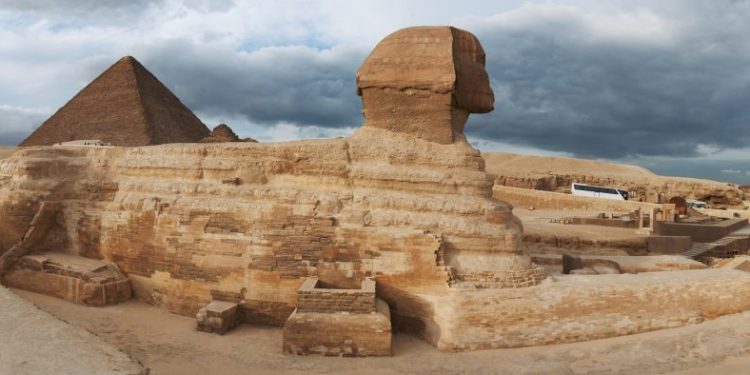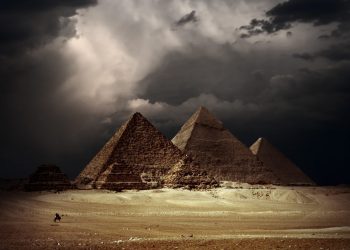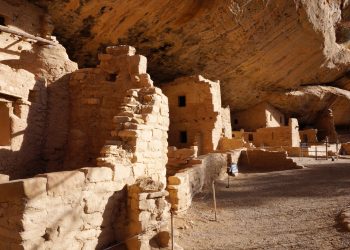There’s a massive monolithic statue right next to Egypt’s most famous pyramids, and no one knows its purpose, exact age, or history.
We know its old. Like, really old. In fact, some theories have put forth the idea that the Great Sphinx of Giza predates even the ancient Egyptian civilization. The truth is we don’t know.
What we do know is that already to the ancient Egyptians, the monument was ancient. The Great Sphinx of Giza is so mysterious that scholars have even ventured out and made reference to the Sphinx, saying that it is “the very embodiment of antiquity and mystery itself.”
And that is perhaps what best describes this massive statue. It is really ancient and really mysterious. Those are two words that best define the Sphinx today.
The above quote comes from one of the most famous Egyptologists to dig beneath the golden sands of Egypt, Egyptologist Miroslav Verner, looking for explanations that would help understand the complexity of the ancient Egyptian civilization. Here’s what Verner wrote about the Sphinx:
The Great Sphinx of Giza is more than simply a symbol of ancient and modern Egypt. It is the very embodiment of antiquity and mystery itself. Over the centuries it has fired the imaginations of poets and scientists, adventurers and travelers. Although it has often been measured, described, investigated using the most up-to-date scientific-technical means, and discussed at special scientific conferences, fundamental questions remain unanswered: Who built it, when, and why? (234)
A complex Mystery
The Sphinx is so mysterious that we don’t even know its exact name. In fact, the name “Sphinx” is a relatively modern one. It was given to the statue at Giza by the Ancient Greek making reference to a mythical creature that had the head of a woman, the body of a mighty lion, and the wings of a bird.
The massive statue is located to the northeast of an ancient structure identified by archeologists as Khafre’s Valley Temple. The Sphinx was carved in-situ. In fact, mainstream experts argue that whoever carved the Sphinx did so in an ancient quarry. The massive monument is made of limestone bedrock experts call the Muqqatam Formation, which originated approximately fifty million years ago.
The quarry where the Sphinx was carved is believed to have been used by the builders of the pyramids to obtain limestone from. Other surrounding monuments are believed to have been crafted using the very limestone the Sphinx is made of.
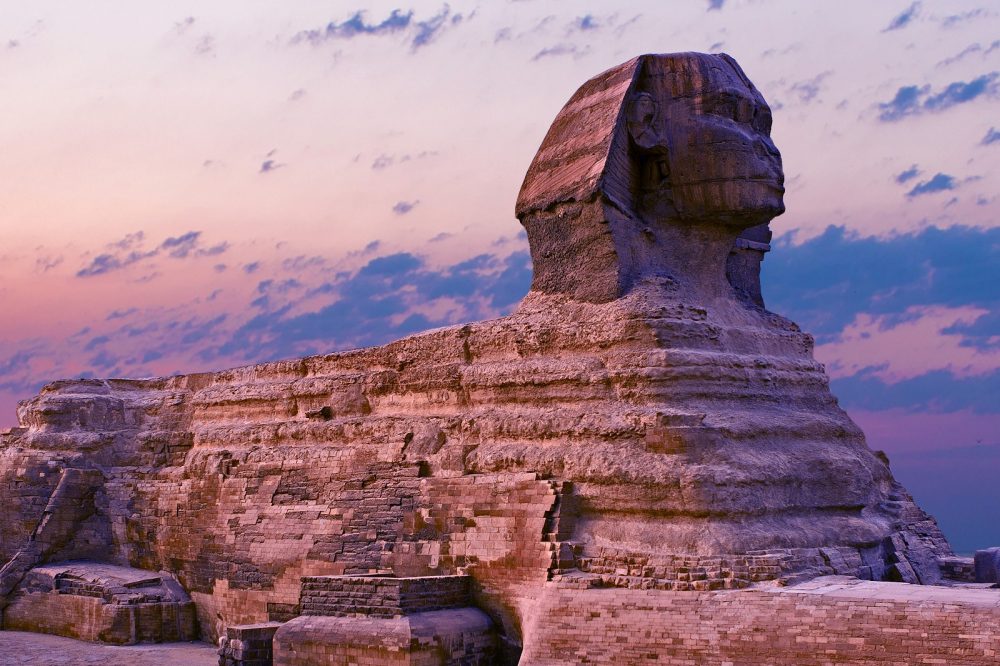
The Great Sphinx, which is considered the oldest known monumental sculpture in Egypt, measures seventy-three meters in length, from its paw to its tail, and measures twenty meters in height, from the base to the top of the head. The entire statue is nineteen meters wide.
Being one of the largest and oldest statues on the surface of the planet, it is no surprise that the Sphinx is shrouded in mystery since time immemorial.
Despite centuries of study, not a single scholar has been able to accurately define, describe, and explain the Great Sphinx of Giza. Its origin, date, purpose, and name are a historic enigma.
Composition of the Sphinx
Geological surveys have revealed that the limestone of the area shows clear signs of erosion, most of which is assumed to have been caused by wind and windblown sand.
This may have aided in the erosion visible on the body of the Sphinx, although different theories suggest the monument may have been exposed to large amounts of water in the past, a theory which indicates the Sphinx may even date back to end of the last Ice Age, precisely when water erosion left its mark on the monument.
The Sphinx’s lowest part of the body, including its legs, is made of solid rock. However, upper parts of the body of the monument are composed of softer layers which have suffered degradation. The layer from which the Sphinx’s head was sculpted is much harder.
Although sculpted from the Giza bedrock, it is believed that there are a number of entrances leading to mysterious and lost chambers, tunnels and cavities located beneath the body of the Sphinx. Adventurers, explorers, and writers have theorized that incredible, incalculable treasures remain hidden beneath the massive statue, waiting one day to be rediscovered.
Mainstream scholars disagree, saying that there is nothing inside or beneath the Sphinx.
Names throughout history
The original name of the Sphinx is lost forever. Not a single document exists that mentions when the Sphinx was carved, and what its creators called it. This isn’t surprising since there are also no documents that mention the Pyramids at the Giza plateau, their exact building date, and the original purpose.
The fact that the origin of the Sphinx is shrouded in mystery is evident. In fact, despite the fact it is an imposing statue, not a single inscription making reference to the monument appears in any known inscription of the old Kingdom. Neither are there other inscriptions describing its construction or purpose.
However, in the New Kingdom, the Sphinx was worshiped as the solar deity Hor-em-akhet. Pharaoh Thutmose IV, who found the statue half-buried beneath the sand makes reference to the sphinx as such in the Dream Stele.
Medieval Arab writers called the Sphinx balhib and bilhaw. Its modern Arabic name is Abū al Hūl which translates to “The Terrifying One.”
Who Commissioned it?
The truth is we don’t know. However, Egyptologists like Selim Hassan are inclined to believe that given its surroundings, the Sphinx was most likely commissioned by Khafre. Hassan makes it clear however that we must understand that this is a theory and not a single inception exists connecting the Sphinx to Khafre:
Taking all things into consideration, it seems that we must give the credit of erecting this, the world’s most wonderful statue, to Khafre, but always with this reservation: that there is not one single contemporary inscription which connects the Sphinx with Khafre; so, sound as it may appear, we must treat the evidence as circumstantial, until such time as a lucky turn of the spade of the excavator will reveal to the world a definite reference to the erection of the Sphinx.
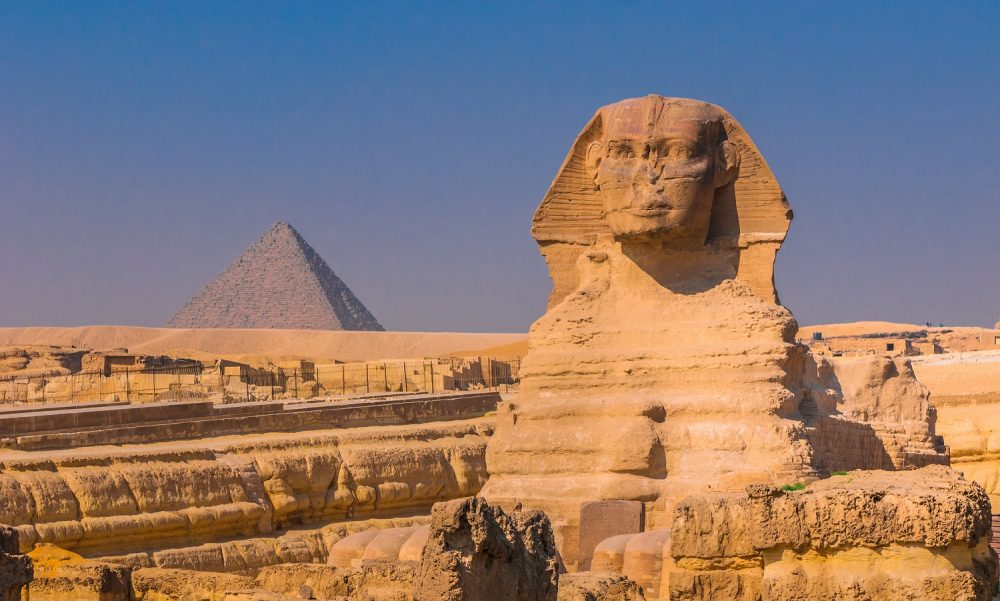
The evidence Hassan mentions is based on its location and its vicinity to the funerary complex near the second largest pyramid of Giza, that of Khafre.
The evidence just as with the pyramids and their purpose is circumstantial when we analyze the Sphinx’s history and purpose.
Another supposed indication that suggests Khafre commissioned the massive monument is a statue of Khafre that was discovered buried upside down together with other fragments inside the Valley temple. Written evidence is nonexistent.
More than a thousand years after Khafre, Thutmose IV erected the Dream Stele and associated the Sphinx with Khafre. When the engraved stele was found, the writing on it was badly damaged and incomplete. It is noteworthy to mention that it only made reference to Khaf, not Khafre. The extract mentioning Khaf is translated below:
which we bring for him: oxen … and all the young vegetables; and we shall give praise to Wenofer … Khaf … the statue made for Atum-Hor-em-Akhet.
Just as its name, its origin remains an archeological enigma.
Solving the Riddle
The Sphinx is a mystery to modern Egyptologists, but go back one hundred years or more, and you will find that Egyptologists in the 1800s were just as baffled by the monument as we are today.
However, there are some scholars that excavated and studied the Sphinx and were led to believe that the statues and its associating temples predate the rule not only of Khafre but Menkaure and Khufu as well.
One of the most famous Egyptologists to explore the Giza plateau, Flinders Petrie wrote in 1883 that: “The date of the Granite Temple [Valley Temple] has been so positively asserted to be earlier than the fourth dynasty, that it may seem rash to dispute the point”.
Another famous Egyptologist who discussed the Sphinx and its mysterious origin is Auguste Mariette, the founder of the Egyptian Museum of Cairo. Mariette unearthed the Inventory Stella, which is believed to date back to around 670 BC. It mentions how Pharaoh Khafre came upon the Sphinx, buried in the sand. This means that he didn’t commission it and that it possibly predates the fourth dynasty of ancient Egypt.
However, mainstream scholars dismiss the content of the Inventory Stela as a purposeful fake, created by local priests trying to twist history by instilling the much more contemporary temple of Isis with a history it did not possess before. But like everything else with the Sphinx, this too is just a theory.
A third, equally famous Egyptologist, Gaston Maspero, who meticulously excavated and surveyed the Sphinx in 1886 concluded that since the Dream Stela mentioned Khafre, it was he who was the Pharaoh responsible for its excavation, which suggests that the Sphinx must have already been there by the time Khafre was crowned Pharaoh. Maspero suggested that the Sphinx predates not only Khafre but his predecessors as well, even perhaps the entire Fourth Dynasty of ancient Egypt.
Maspero wrote:
This marvelous object [the Great Sphinx] was in existence in the days of Khafre, or Khephren, and it is probable that it is a very great deal older than his reign and that it dates from the end of the archaic period circa 2686 BC.
Older than old
To understand how old the Sphinx (at least) is, we must travel to a time and imagine the Giza Necropolis nearly completely abandoned. It was then when the Great Sphinx was eventually almost completely buried in the sand.
The First documented case of restorations to the Sphinx date back more than 3,400 years ago, around 1,400 BC, when Pharaoh Thutmose IV organized a team of workers who after much effort, managed to excavate the monuments front paws, where he would later place his famous granite stele, the Dream Stele.
It is believed that Ramesses the Great, around 200 years later, initiated a second excavation and restoration of the Great Sphinx.
Egyptologist Mark Lehner, a pioneer in the study of the Pyramids and the Giza plateau asserted that there was most likely a much earlier excavation and renovation of the Sphinx, dating back to the Old Kingdom, between 2,686 and 2,184 BC.



